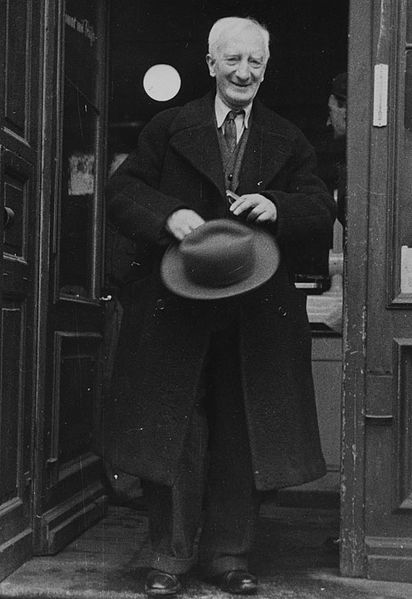From welfare state to welfare society
Mention the name ‘Beveridge’ and chances are that your mind will spring to his 1942 report: the blueprint for the post-war welfare state. It set out how the state should take responsibility for the welfare of citizens by providing free...
Mention the name ‘Beveridge’ and chances are that your mind will spring to his 1942 report: the blueprint for the post-war welfare state. It set out how the state should take responsibility for the welfare of citizens by providing free health care and secondary and comprehensive social security based on a compulsory system of national insurance.
However, what is less commonly known is that the 1942 report was the first in a trilogy. Subsequent volumes were ‘Full Employment in a Free Society’ (1944) and ‘Voluntary Action’ (1948).
The later reports are important because Beveridge saw himself as laying the groundwork of a ‘welfare society’, not a ‘welfare state’. Social advance depended on everyone, with business and civil society playing their part. Indeed, Beveridge was furious that the Labour government implemented his proposals through state agencies rather than friendly societies. In his 1948 report, he complained about the ‘damage’ that the welfare state was doing to what people do for themselves. He suggested that the government should “encourage voluntary action of all kinds” and “remove difficulties in the way of friendly societies and other forms of mutuality”. The system, he felt, should be owned by the people and not the state.
Beveridge’s pleas were ignored. Despite this, the decades after the second world war saw significant improvements in education, health, life expectancy, social mobility, employment opportunities, and prosperity. However, whilst not wanting to detract from these achievements, we have a tendency to look back on the high points of the welfare state uncritically, seeing only the great social advances, while forgetting an equally important narrative.
The roots of this narrative lie in what Hilary Rose has called the myth of ‘the affluent society’ in which both the Labour party and the Conservative party sought to gain all possible credit for setting up the welfare state. This myth obscured the fact that the system failed to eradicate poverty, as Abel Smith and Townsend so graphically demonstrated in their 1965 study The Poor and the Poorest. Reviewing the social service system in 1972 book ‘Poverty and Taxation’, Jim Kincaid noted that it “does nothing effective to iron out inequality, and that the services are far less egalitarian and more punitive than is generally supposed.”.
Things could have been so much better had Beveridge’s advice been heeded. He foresaw that cold bureaucracies would dominate the system. This led to the formation of ‘claimants unions’ in the 1960s, which saw the Department of Health and Social Security as an agent of social control, operating with its own internal culture and rules largely outside parliamentary accountability. The Claimants Union Federation demanded a four-point plan:
- The right to adequate income without means test for all people.
- A free welfare state for all with services controlled by people who use it.
- No secrets and the right to full information.
- No distinction between the deserving and undeserving poor.
The lack of public ownership of the welfare system meant that when the right came to attack it, they were in a stronger position than they otherwise might have been. Following changes to social attitude in the 1970s, when people increasingly became unwilling to pay to support the welfare of others, the 1979 Conservative government developed an ‘enterprise culture’ that involved tax cuts, privatisation of government services, deregulation, and public expenditure cuts. This led to the erosion of the principles behind the welfare state.
This decline appears set to continue. According to the latest British Social Attitudes survey public support for state intervention to help the poor is falling rapidly, which could eventually bring an end to all that Beveridge achieved. So, as we commemorate the 70-year anniversary of Beveridge, we should perhaps look to Beveridge’s dream of a welfare society rather than a welfare state. It is vital that we involve the public in this devising a new system that builds on the groundswell of community activism, which is finding expression in new people-based movements such as Transition Towns, London Citizens, 38 Degrees, and UK Uncut, which signify a new desire to step forward to help to build a better society. We should be going back to the tradition set out in E. P. Thompson’s Making of the English Working Class. As the recent Fabian pamphlet Letting Go puts it, it is important to see that: “The state can’t deliver. People do.”
The Webb Memorial Trust has embarked on an ambitious programme to develop a model of what a good society without poverty would look like. The work will move outside the rarefied world of the policy elite to find out what people would be prepared to do to deliver it.
